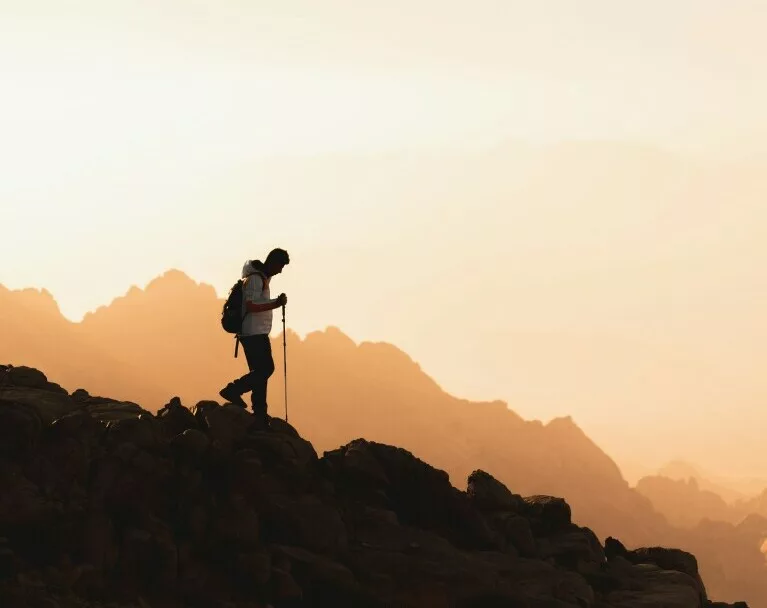Here Are Five Tips for Going Down Hills

Descending a trail can be a challenging experience that puts significant strain on your muscles and ligaments. To help you avoid aches and pains during your next downhill adventure, we consulted a physical therapist for expert tips. Follow these strategies to hike downhill pain-free and enjoy your journey to the fullest.
Pay Attention to the Terrain
One of the most critical aspects of hiking downhill is being mindful of the terrain. Slippery surfaces like roots, rocks, sand, water, and snow can make your descent tricky and increase the risk of falls and injuries. Stay alert and watch your footing to prevent accidents that can result from a momentary loss of attention.
Keep a Loose Body Posture
Maintaining a relaxed body posture is essential for a smooth downhill hike. Visualize a basketball player’s triple-threat stance: feet shoulder-width apart, knees slightly bent, chest out, and head up. Keeping a slight bend in your knees and avoiding tension helps you respond more effectively to unexpected slips and changes in the terrain.
Plant Your Heels
Using the plunge step technique can provide stability and control while hiking downhill. Sit back in your stride with a slightly wide stance and lead with your heel. Lean into your butt slightly as you plant your heel to modulate your momentum. This technique helps distribute your weight evenly and keeps you stable.
Keep Your Weight Off of Your Hiking Poles
While hiking poles are excellent for stability, they should not be relied upon as your primary support. Avoid leaning heavily on them and instead, use them to maintain balance. Your poles should be adjusted to a height that creates a 90-degree angle at your elbow. Consider using just one pole for better awareness and reactivity.
Practice and Prepare
Preparation is key to a pain-free downhill hike. Strengthen your quadriceps with exercises like Bulgarian split squats and balance the load on your quads and hamstrings at a 3:2 ratio. Incorporate core strength, glute exercises, single-leg deadlifts, and balance drills into your routine. Regular practice of going downhill will build your strength and confidence, making the descent more enjoyable.
Final Tip
Gradually increase your downhill practice to avoid sudden transitions from flat terrain to steep descents. Consistent practice enhances your strength and hiking experience, allowing you to tackle more challenging trails with ease.
By paying attention to the terrain, maintaining a loose posture, planting your heels, using hiking poles correctly, and practicing regularly, you can hike downhill without pain and enjoy the beauty of your surroundings. Happy hiking!
** Here’s a little transparency. Our website contains affiliate links. This means if you click and purchase, we may receive a small commission. Don’t worry, there’s no extra cost to you. It is a simple way you can help support our mission to bring you quality content. **
(As an Amazon Associate, I earn from qualifying purchases)
